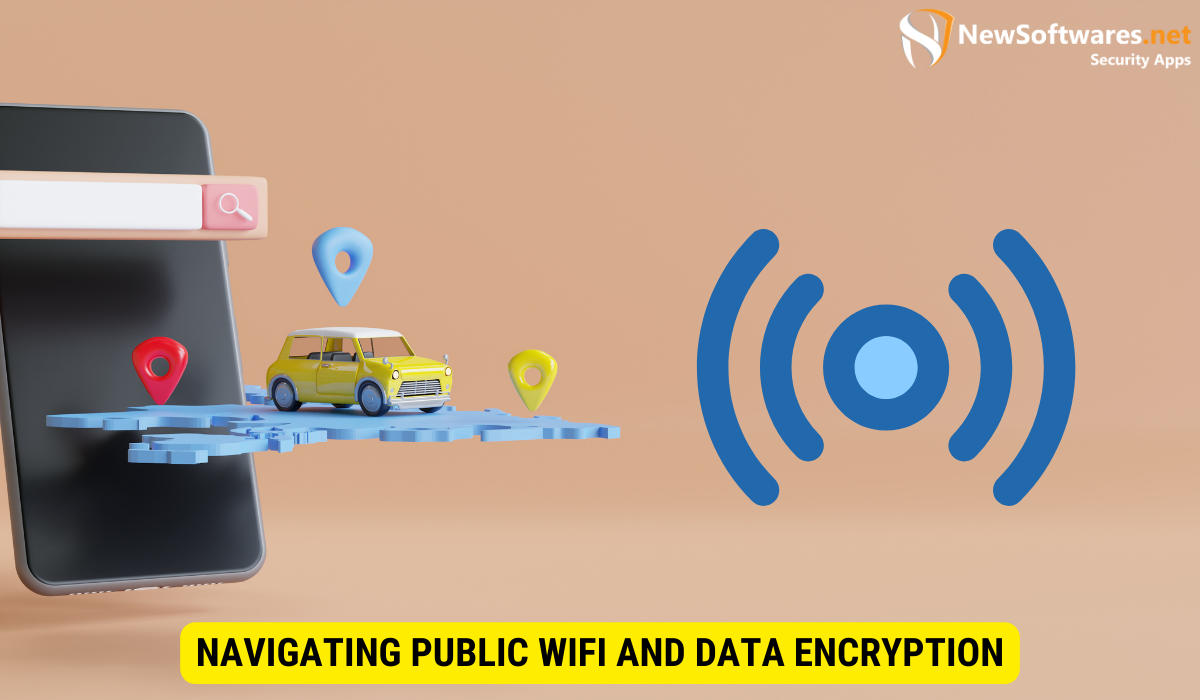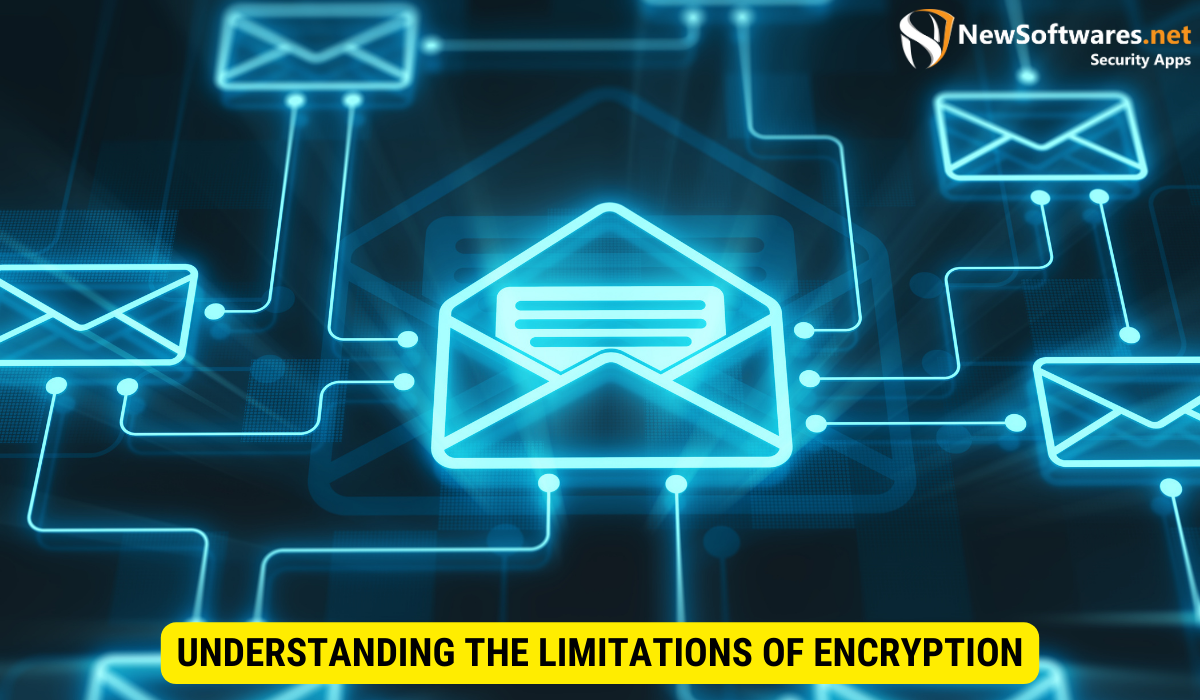To protect data on public WiFi, use VPNs and HTTPS encryption, update software regularly, and practice safe browsing habits.
In the digital age, public WiFi networks are ubiquitous, offering convenient internet access in locations like coffee shops, airports, and hotels. However, these networks also pose risks to data security. This article explores the significance of encrypting data on public WiFi and provides guidance on securing your information on these networks.
Navigating Public WiFi and Data Encryption

Understanding Public WiFi
Public WiFi denotes open wireless networks in locations such as cafes, airports, and libraries, typically provided by the establishment or a third-party. While these networks offer easy internet access, they also come with security risks. When connecting to public WiFi, your device exchanges data that can include sensitive personal information. Without adequate security, this data is vulnerable to interception by unauthorized parties on the same network.
The Necessity of Data Encryption
Data encryption is the technique of converting information into a secure format readable only by authorized parties. It’s particularly crucial on public WiFi, where data transmitted between your device and the access point is otherwise exposed. Encryption scrambles this data, making it indecipherable without the decryption key. While various encryption protocols exist, WPA2 is the strongest currently available for public networks. Combining encryption with secure HTTPS websites further enhances data security.
Risks of Unencrypted Data on Public WiFi
Identity Theft and Fraud
Unencrypted public WiFi can expose you to identity theft and fraud. Hackers can capture your personal details like passwords and credit card numbers, leading to unauthorized transactions and identity impersonation.
Data Breach and Information Leakage
Using unencrypted WiFi can lead to data breaches and leakage of sensitive personal or business information. This can have serious financial and reputational repercussions for individuals and organizations.
Understanding Data Encryption
What is Data Encryption?
Data encryption involves transforming data into a format that’s unreadable to anyone without the right decryption keys. It uses algorithms and keys to encrypt the data, ensuring it remains secure and confidential.
How Data Encryption Functions?
Encryption operates by applying algorithms to convert plain text into cipher text. This process, along with a secret key, ensures the data remains secure and can only be accessed by those with the corresponding decryption key.
Steps to Encrypt Data Over Public WiFi
Employing Virtual Private Networks (VPNs)
A VPN establishes a secure, encrypted connection between your device and the internet, safeguarding your data on public WiFi. It ensures all data you transmit is encrypted and sent through a private network.
Using HTTPS for Secure Browsing
Ensure the websites you visit use HTTPS, which encrypts data between your device and the website, offering additional protection against interception.
Implementing Email Encryption
Encrypt your emails when sending sensitive information over public WiFi to protect the content from unauthorized access.
Additional Security Measures
Regular Software and System Updates
Keep your operating system, applications, and antivirus updated to protect against security vulnerabilities.
Activating Two-Factor Authentication
Two-factor authentication adds an extra verification step, significantly improving the security of your online accounts.
Practicing Safe Browsing Habits
Avoid suspicious websites, refrain from clicking unknown links, and don’t download files from untrusted sources.
Staying Ahead of Security Threats
Keeping Informed About Security Trends
Regularly check reputable security news sources and participate in community forums to stay updated on the latest threats and trends. Hackers continually evolve their tactics, so understanding the current landscape can help you prepare and protect your data effectively.
Choosing Reliable Security Tools
Invest in reliable security tools and services. Whether it’s a trusted VPN provider, a robust antivirus program, or an effective email encryption service, the right tools can make a significant difference in your online safety. Research and choose services known for their strong security measures and positive user reviews.
Regularly Backing Up Data
Regularly back up your data to mitigate the effects of potential breaches. Whether it’s cloud services or physical storage devices, having a recent backup means you can recover your important information even if your device is compromised while using public WiFi.
Understanding the Limitations of Encryption

Recognizing Encryption’s Boundaries
While encryption is a powerful tool for protecting data, it’s not a panacea. Understanding its limitations is crucial for a comprehensive security strategy. For example, encryption doesn’t protect against all types of attacks, such as those exploiting software vulnerabilities or social engineering tactics.
Complementing Encryption with Other Strategies
Complement encryption with a holistic approach to security. This includes using strong, unique passwords, enabling multi-factor authentication, being wary of phishing attempts, and ensuring that all your devices are secure and up-to-date with the latest security patches.
Promoting a Culture of Security
Educating Others About Safe Practices
Promote a culture of security among your peers, family, and colleagues. Educate them about the risks of public WiFi and the importance of data encryption. Sharing knowledge and best practices can create a safer environment for everyone.
Advocating for Better Security Standards
Support and advocate for better security standards and practices in your community and workplace. Encourage establishments offering public WiFi to provide secure, encrypted connections and educate their patrons about the risks and protective measures.
Preparing for the Future
Anticipating Future Security Challenges
As technology advances, so do the methods used by cybercriminals. Stay prepared by anticipating future challenges. Keep an eye on developments in quantum computing, AI, and other emerging technologies that might impact data security.
Embracing Next-Generation Security Solutions
Be open to adopting next-generation security solutions as they become available. Technologies like quantum encryption, AI-driven security, and advanced authentication methods will be critical in combating future threats.
Key Takeaways
- Public WiFi networks, while convenient, are vulnerable to security breaches.
- Encrypting your data is vital for protecting it from unauthorized access on public networks.
- Use VPNs, HTTPS, and email encryption to secure your data on public WiFi.
- Enhance your security with regular updates, two-factor authentication, and safe browsing practices.
- Stay informed about the latest security trends and prepare for future challenges to maintain optimal data protection.
FAQs
Is using public WiFi safe?
Using public WiFi is risky without proper security measures. Employ encryption methods like VPNs and HTTPS for protection.
How does a VPN protect data on public WiFi?
A VPN encrypts your data, creating a secure connection between your device and the internet, shielding it from eavesdroppers.
Can hackers access encrypted data?
While encryption significantly increases security, it’s crucial to use strong algorithms and keep encryption keys secure to prevent breaches.
What are the advantages of two-factor authentication?
Two-factor authentication adds a second security layer, making it harder for unauthorized users to access your accounts.
How can I secure online transactions on public WiFi?
Use secure websites with HTTPS and avoid entering sensitive information on untrusted networks.
Conclusion
Encrypting data on public WiFi is essential for maintaining privacy and protecting sensitive information from potential threats. By understanding the risks and implementing recommended encryption practices like using VPNs, employing HTTPS, and adhering to safe browsing guidelines, you can significantly improve your data’s security. Stay vigilant and proactive in safeguarding your information when accessing public WiFi networks. Remember, the goal is not just to protect your data but also to contribute to a safer digital environment for all. Stay vigilant, stay informed, and stay secure.
